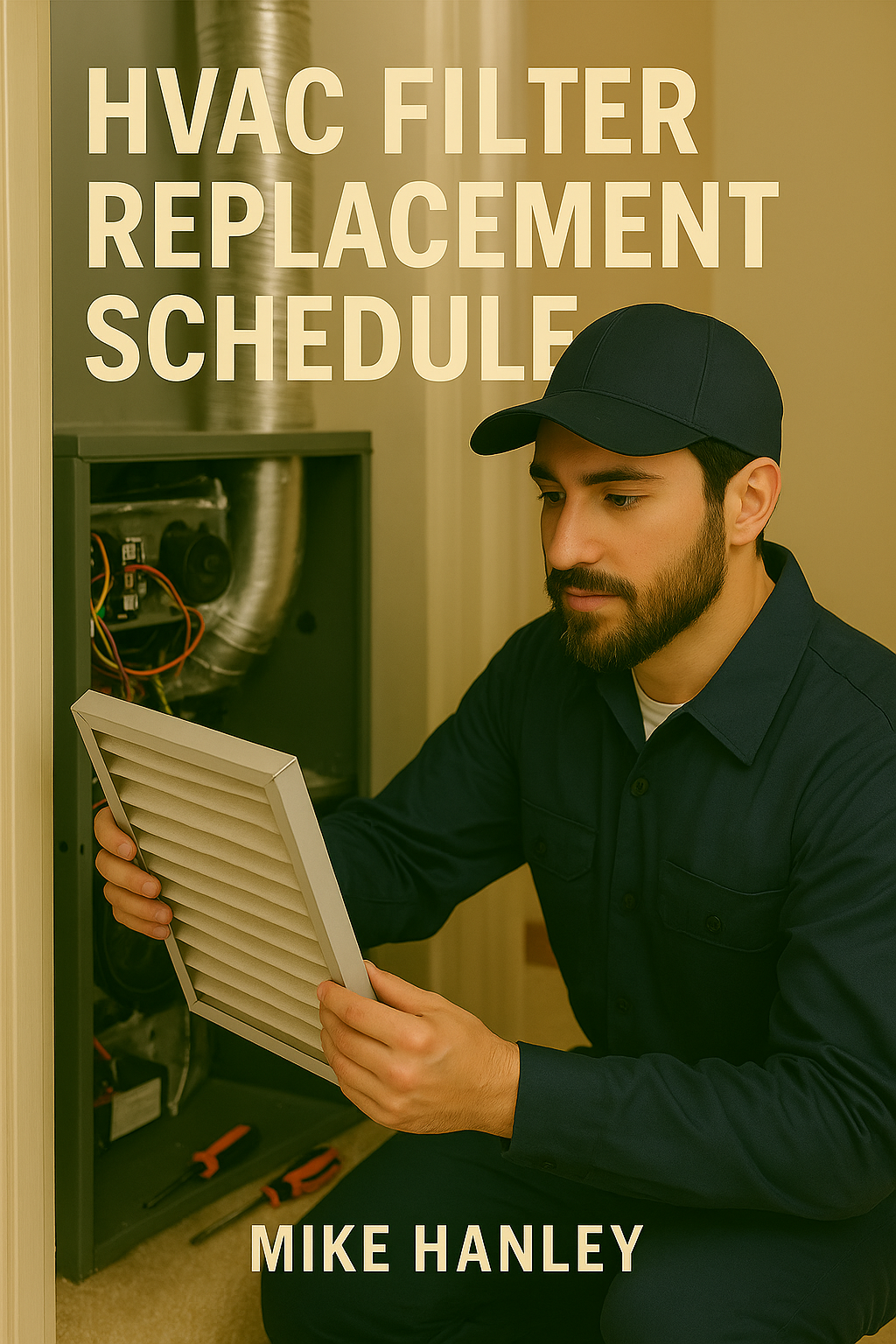📘 Table of Contents
🧠 Why Filters Matter More Than You Think
When people call me about airflow problems, strange smells, or rising electric bills… 80% of the time, it starts with a dirty or neglected filter.
Your filter isn’t just catching dust. It also:
-
Protects your HVAC system from debris damage
-
Improves indoor air quality by up to 50%
-
Prevents blower motor strain and premature failure
-
Maintains consistent airflow and temperature control
-
Reduces energy consumption by 5-15%
🔗 See also: EPA's Indoor Air Quality Guide
📅 Replacement Schedule by Filter Type
|
Filter Type |
Replacement Frequency |
|
Fiberglass (1”) |
Every 30 days |
|
Pleated (1–2”) |
Every 60–90 days |
|
High-efficiency media (4–5”) |
Every 6 months |
|
HEPA filters (in air scrubbers) |
Every 6–12 months |
|
Washable (electrostatic) |
Rinse monthly, replace every 5 years |
🧠 Tip: Write the replacement date directly on the filter frame with a Sharpie after installing.
🏡 Replacement Frequency by Household Type
The table above is a general guideline. In the field, here's how I actually recommend timing it, based on your lifestyle:
|
Household Scenario |
Suggested Change Rate |
|
No pets, no allergies |
Every 3 months |
|
1 pet |
Every 2 months |
|
2+ pets |
Monthly |
|
Family member with allergies |
Monthly or 45 days |
|
mokers in the home |
Monthly |
|
Wildfire-prone region |
Monthly during season |
🔗 See also: The Role of HVAC System in Air Quality
🛠 Signs Your Filter Needs Changing (Even If It's Early)
Even if you're on schedule, sometimes life throws curveballs. Replace your filter sooner if you notice:
Visual Signs:
-
Filter appears gray or black (should be white/cream)
-
Visible dust buildup on vents
-
Light can't pass through filter when held up
Performance Signs:
-
HVAC runs longer to reach set temperature
-
Weak airflow from vents
-
System cycles on/off frequently
-
Unusual noises from air handler
Health Signs:
-
Increased allergy symptoms
-
More dust on furniture
-
Musty or stale odors from vents
🔗 See also: AHS Guide: When to Change HVAC Filters
🛒 Choosing the Right Filter: MERV Ratings Explained
MERV (Minimum Efficiency Reporting Value) is the rating system for how effective a filter is at trapping particles.
|
MERV Rating |
Captures |
Typical Use |
|
1–4 |
Pollen, dust mites |
Basic residential |
|
5–8 |
Mold spores, pet dander |
Better air quality homes |
|
9–12 |
Fine dust, smoke, lead dust |
Premium filtration homes |
|
13+ |
Bacteria, viruses, allergens |
Hospitals / HEPA systems |
️⚠ Important: Higher isn't always better! MERV 13+ filters can restrict airflow in residential systems not designed for them, causing:
-
Increased energy costs
-
Frozen coils
-
Premature blower motor failure
Recommendation: Most homes perform best with MERV 8-11 filters, which is the sweet spot between filtration and airflow.
🏁 Mike's Advice And What to Read Next
Your HVAC filter is small, but it’s the first line of defense for your comfort, efficiency, and air quality.
If your filter’s overdue, don’t wait. Swap it, mark the date, and check out my next article, where we’ll talk about whether you can tackle HVAC maintenance yourself or if it’s time to call in a pro.
-
🔙 Previous Article: Annual HVAC Tune-Up Checklist
-
➡️ Continue Series: DIY vs. Professional HVAC Maintenance
-
🏠 Return to Main Topic: How to Maintain Your HVAC System for Maximum Lifespan
-
🛒 Upgrade Your System:
❓FAQ
Q: How do I know what size filter to buy?
A: Look at the existing filter, dimensions (like 16x25x1) are printed on the frame. If not, measure it.
Q: Are reusable filters worth it?
A: Only if you clean them consistently. If you forget, they become worse than disposable ones.
Q: Can I use high-MERV filters for allergies?
A: Yes, but check if your HVAC can handle the airflow resistance. MERV 11 is a good middle ground.
Q: Should I change my filter if I just had a renovation?
A: Absolutely. Drywall dust and debris clog filters fast, change them right after any construction.







